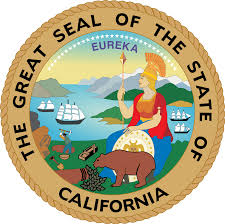BREAKING NEWS: California Opens Up for Commercial Hemp Cultivation
CaliforniaMarijuana Industry News May 2, 2019 MJ Shareholders 0


By Griffin Thorne, Attorney at Harris Bricken
We have been closely following California’s commercial hemp cultivation licensing law since it was proposed last year as Senate Bill 1409 (see here, here, and here). In March, I wrote about some of the roadblocks to implementing SB-1409’s commercial hemp cultivation programs, and the lengthy review process of the California Department of Food and Agriculture (“CDFA”) regulation which would allow hemp cultivators to register with their county agricultural commissioners.
The CDFA’s regulation was recently approved, and as of April 30, 2019, the CDFA posted applications for registration for commercial hemp cultivation and hemp seed breeders (see here and here respectively). It looks like these respective apps will not be submitted to the CDFA directly, but will instead be provided to county agricultural commissioners in the county in which a cultivator or seed breeder wishes to cultivate hemp. Applicants for commercial cultivation must provide basic information about themselves, as well information about the cultivation site, the purpose of the site (cultivation v. storage), GPS coordinates and other information regarding the site, a boundary map, and certain information about seed cultivars. The seed breeder application is relatively similar.
Despite the fact that these applications are now live, it’s not completely clear how they will be implemented. There are a number of counties in California that restrict or prohibit hemp cultivation. The memo attached to the application itself identifies a number of counties with restrictions: Amador, Calaveras, Glenn, Humboldt, Lassen, Marin, Mariposa, Mendocino, Merced, Modoc, Mono, Monterey, Napa, Nevada, Orange, Placer, Sacramento, San Bernardino, San Joaquin, Santa Barbare, Shasta, Sierra, Siskiyou, Sonoma, Tehama, Trinity, Tulare, Tuolumne, Yolo, and Yuba. Since the application is so new, we haven’t evaluated which of these counties fully prohibit cultivation, but it’s a safe bet that if any of them do fully prohibit it, their agricultural commissioners are probably not going to accept these applications.
But what about counties that don’t say anything or only have some minor restrictions? It’s not clear yet whether counties will try to delay implementing hemp cultivation by claiming that they need to establish local protocol for registration. Ultimately, each county may do something different, and it will take time before we know what the full effect of the law is.
It’s also not clear how this will be impacted by the federal Agricultural Improvement Act of 2018 (or “2018 Farm Bill”). I summarized parts that law in my previous post linked above, but notably for this post, hemp produced per the former 2014 Farm Bill will be permissible. The 2014 Farm Bill doesn’t explicitly allow commercial cultivation, and so it’s not clear how this will play out. What is clear is that once the U.S. Department of Agriculture begins accepting state hemp-production plans for review per the 2018 Farm Bill, California will need to send its plan for review by the USDA. This could affect registered hemp cultivators, but as per usual, it’s not clear how that will happen just yet.
Stay tuned to the Canna Law Blog for more details on California hemp laws.
Re-published with the permission of Harris Bricken and The Canna Law Blog
MJ Shareholders
MJShareholders.com is the largest dedicated financial network and leading corporate communications firm serving the legal cannabis industry. Our network aims to connect public marijuana companies with these focused cannabis audiences across the US and Canada that are critical for growth: Short and long term cannabis investors Active funding sources Mainstream media Business leaders Cannabis consumers









No comments so far.
Be first to leave comment below.